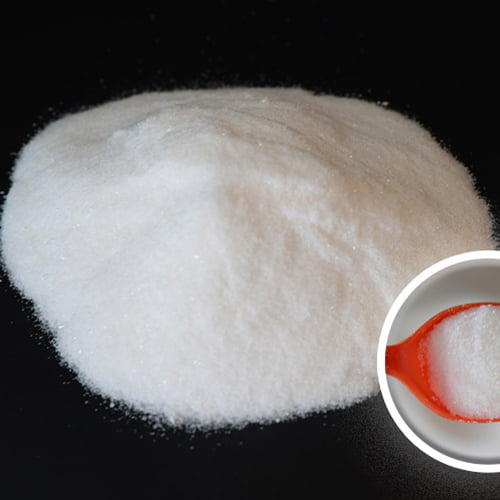Introduction

Welcome to our comprehensive guide on the solubility of sodium formate. In this detailed exploration, we unravel the mysteries surrounding the solubility characteristics of sodium formate in various solvents. Solubility, a fundamental property in chemistry, holds immense significance in understanding the behavior and applications of chemical compounds. Sodium formate, a versatile substance with diverse industrial uses, is no exception. Join us as we delve into the intricate world of sodium formate solubility, uncovering its underlying principles, influencing factors, and practical implications across different fields. Whether you’re a seasoned chemist seeking deeper insights or an industry professional exploring the applications of sodium formate, this guide is your gateway to unlocking the secrets of solubility and sodium formate’s pivotal role therein.
Factors Affecting Sodium Formate Solubility
Several factors influence the solubility of sodium formate in water:
Temperature: Sodium formate solubility increases with increasing temperature. This is because higher temperatures provide more energy to overcome the intermolecular forces between sodium formate molecules, allowing them to dissolve more readily in water.
Solvent Properties: Sodium formate is highly soluble in water due to the polarity of both substances. Water molecules, with their partial positive and partial negative charges, can effectively attract and surround sodium and formate ions, facilitating their dissolution.
Pressure: Increasing pressure can slightly increase the solubility of sodium formate in water. This is because higher pressure compresses the solvent molecules, forcing them to interact more closely with solute molecules.
Mechanisms Influencing Sodium Formate Solubility
The exceptional solubility of sodium formate in water can be attributed to the following mechanisms:
Ion-Dipole Interactions: The positively charged sodium ions (Na+) are attracted to the partially negative oxygen atoms of water molecules, while the negatively charged formate ions (HCOO-) are attracted to the partially positive hydrogen atoms. These strong ion-dipole interactions disrupt the water’s hydrogen bonding network, allowing sodium formate molecules to dissolve and disperse within the solvent.
Hydrogen Bonding: Sodium formate molecules can also form hydrogen bonds with water molecules. Hydrogen bonds, although weaker than ion-dipole interactions, contribute to the overall solubility of sodium formate by stabilizing the solute-solvent interactions.
Hydration Shells: As sodium formate dissolves in water, each solute molecule becomes surrounded by a layer of water molecules, forming a hydration shell. These hydration shells prevent the solute molecules from re-aggregating and promote their dispersion throughout the solvent.
Table of Common Solvents for Sodium Formate
| Solvent | Solubility (g/100 mL) | Temperature (°C) |
|---|---|---|
| L'eau | 53.6 | 25 |
| Methanol | 84.0 | 25 |
| Ethanol | 67.0 | 25 |
| Acetone | 30.0 | 25 |
| Diethyl ether | 10.0 | 25 |
Applications Leveraging Sodium Formate Solubility

Sodium formate’s exceptional solubility in water enables its diverse applications in various industries:
Conservateur: In pharmaceutical formulations, sodium formate’s solubility allows it to effectively distribute throughout the solution, preventing microbial growth and extending product shelf life.
Agent de dégivrage : Sodium formate’s non-corrosive nature and low freezing point make it an ideal deicing agent for roads, bridges, and aircraft runways. Its solubility ensures that the deicing solution can effectively spread and melt ice and snow.
Industrie textile: In the textile industry, sodium formate’s solubility facilitates its use as a dyeing and printing agent. The solute molecules can easily penetrate the fabric fibers, resulting in uniform and vibrant colors.
Industrie du cuir : Sodium formate’s solubility enables its efficient use as a tanning agent in the leather industry. The solute molecules can effectively penetrate the leather matrix, improving its strength, flexibility, and resistance to water damage.
Conclusion
Sodium formate solubility is a complex phenomenon influenced by various factors and governed by chemical interactions. By understanding the intricacies of sodium formate solubility, industries can optimize its use in diverse applications, ranging from chemical manufacturing to environmental remediation.
In conclusion, this comprehensive guide has provided valuable insights into the secrets of sodium formate solubility, highlighting its significance and applications across different sectors. As industries continue to innovate and evolve, a deeper understanding of sodium formate solubility will pave the way for enhanced processes and outcomes.
FAQ
What is the solubility of sodium formate in water?
At 25°C, the solubility of sodium formate in water is approximately 97.3 grams per 100 milliliters of water.
How does temperature affect sodium formate solubility?
As temperature increases, the solubility of sodium formate in water typically increases. However, this relationship may vary depending on the solvent and specific conditions.
Can sodium formate dissolve in non-polar solvents?
Sodium formate has limited solubility in non-polar solvents such as toluene and hexane due to its polar nature. Its solubility tends to be higher in polar solvents like water and lower in non-polar solvents.
Is sodium formate soluble in organic solvents?
Sodium formate exhibits varying degrees of solubility in organic solvents depending on their polarity. While it is highly soluble in polar solvents like methanol and ethanol, its solubility decreases in less polar or non-polar solvents such as acetone and toluene.
How does pH affect the solubility of sodium formate?
The solubility of sodium formate can be influenced by the pH of the solvent. In aqueous solutions, sodium formate is highly soluble regardless of pH. However, in certain cases, extreme pH levels can affect the dissociation of sodium formate ions, leading to changes in solubility.


